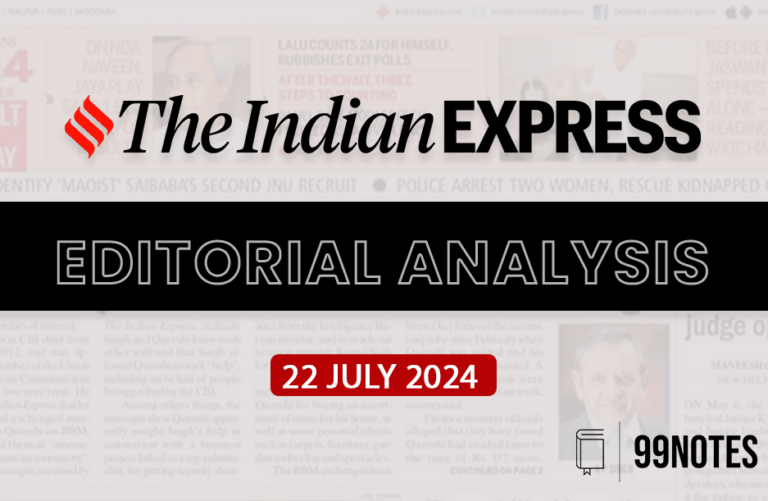07 June 2025 : Indian Express Editorial Analysis
1. In Pursuit of Growth
(Source: Editorial Page, The Indian Express)
| Topic: GS3: Indian Economy – Monetary Policy, Inflation, Growth Projections |
| Context |
|
Background:
-
Repo rate now stands at 5.5%, down by 100 basis points since February 2025.
-
CRR cut to inject ₹2.5 lakh crore liquidity by December 2025.
-
RBI’s inflation projection: 3.7% average for FY26.
-
Growth target retained at 6.5%, but geopolitical and climate risks flagged.
Growth-Oriented Monetary Measures:
-
Rate cuts aim to push domestic demand, consumption, and investment.
-
Lower inflation, favorable monsoon, and falling crude oil prices justify the easing.
CRR Cut and Liquidity Boost:
-
Injects liquidity into the banking system, easing credit conditions.
-
Aims to facilitate transmission of reduced rates to real economy.
Policy Stance Shift – Neutral Signal:
-
Moving to “neutral” suggests a possible pause in further rate cuts.
-
Confusion arises as the RBI signals support for growth but also caution.
Uncertainties Ahead:
-
Risks include geopolitical tensions, global trade disruption, and erratic monsoon.
-
RBI remains cautious about inflation and global headwinds.
Way Foward:
-
Growth-centric monetary tools must be complemented by fiscal prudence and structural reforms.
-
Close coordination between RBI and government needed for managing uncertainty
| Practice Question:
With inflation easing, how far can monetary policy support India’s growth recovery in 2025–26? Discuss with recent RBI measures. (GS-2, 15 marks, 250 words) |
Also Read: The Hindu Editorial Analysis- 07 June 2025
2. More Than States
(Source: Editorial Page, The Indian Express)
| Topic: GS1: Indian Society (Census); GS2: Governance and Federalism |
| Context |
|
Background:
- India’s tiger population rose to 3,682 in 2023, but states like Odisha, Jharkhand, Chhattisgarh, and parts of Telangana show declining tiger numbers. A recent NTCA-WII report attributes this to depleted prey species like sambhar and wild boar due to poaching and poverty-driven bushmeat consumption.
Impact of Census Delay:
-
India’s last census was in 2011; the 2021 edition was postponed due to COVID and has not resumed since.
-
Welfare planning, urbanisation policy, and electoral delimitation suffer from outdated demographic data.
State Demands for Autonomy:
-
States like Tamil Nadu, Bihar, and Andhra Pradesh are demanding decentralised population surveys.
-
The editorial argues this reflects a need to rethink Centre–State power-sharing in data collection.
Governance and Data Gaps:
-
Without updated data, economic planning, welfare targeting, and job schemes are misaligned.
-
The Census delay has hindered critical planning for housing, education, and healthcare in growing urban centres.
Way Forward:
-
The Centre should involve states in population enumeration using shared platforms.
-
A decentralised, real-time demographic data system could complement the formal Census process and enhance cooperative federalism.
| Practice Question: Should India decentralise its population data collection by empowering states? Analyse in the context of governance and federalism. (GS2, 15 marks, 250 words) |
Read more – 06 June 2025 : Indian Express Editorial Analysis




